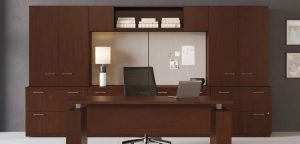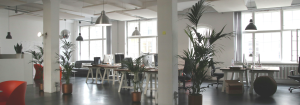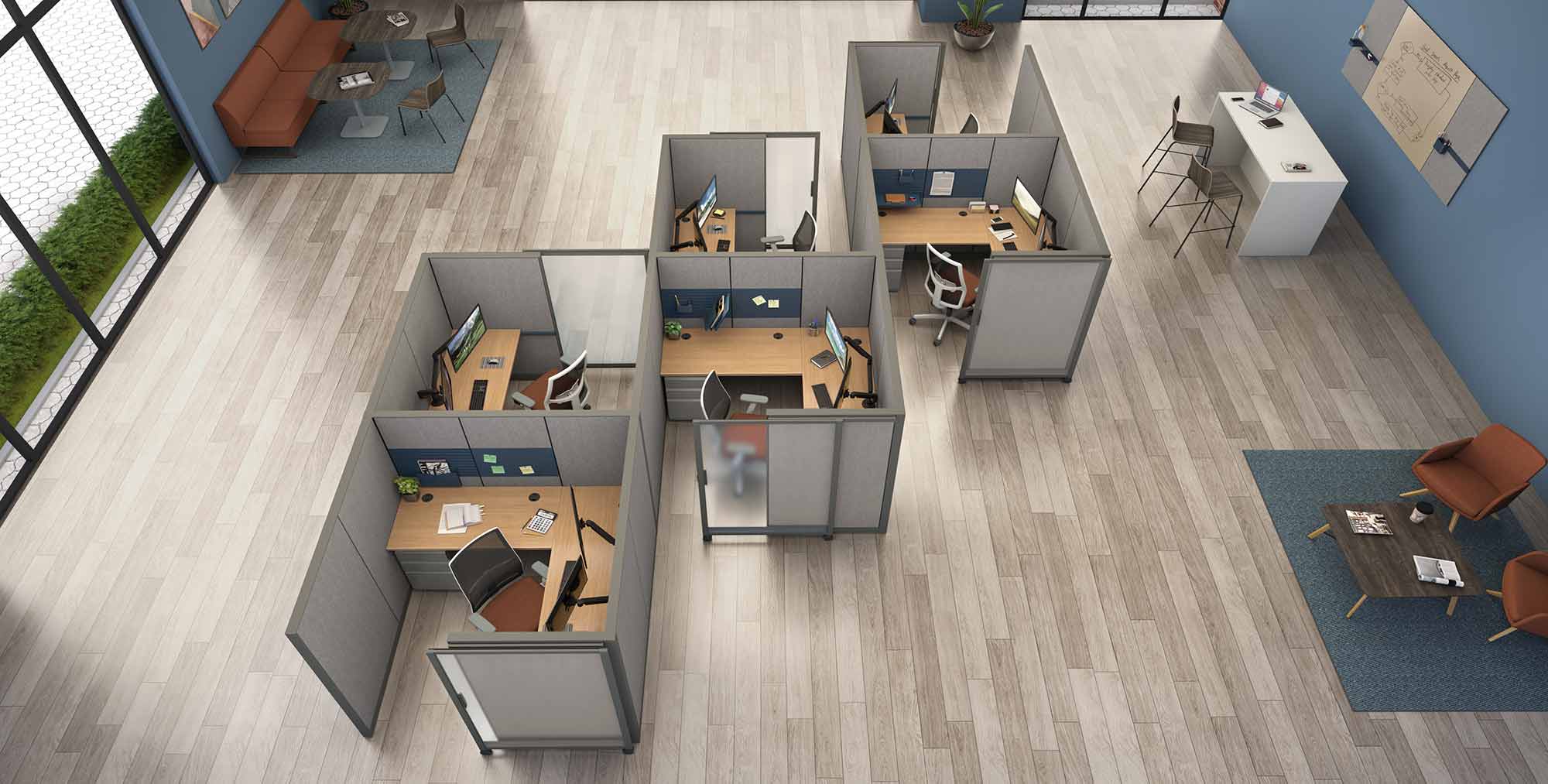
In today’s workplace, it is becoming increasingly important for employees to be able to create their own personal spaces and maintain privacy. This is especially true in open-concept offices and other workspaces where coworkers may be in close proximity to others and their workplace furniture. Fortunately, there are many ways that employers and employees can establish personal space and privacy while still allowing employees to collaborate and interact with each other. Here are some of the different ways of creating personal space and privacy in the workplace to help improve both employee morale and overall productivity.
Partitions
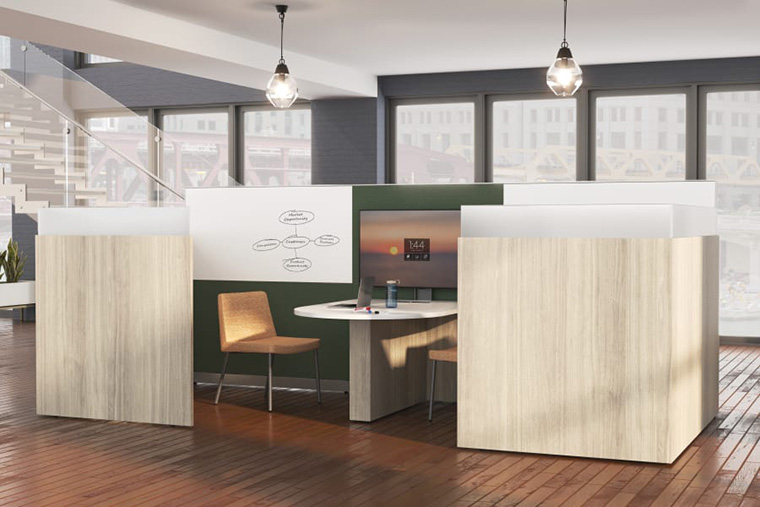
In today’s increasingly digital workplace, the need for privacy in the office has become more important than ever. With the implementation of physical partitions, employers can create a work environment that encourages collaboration while still allowing employees to maintain their own personal spaces. While this may seem like a step back to the cubicle of the late 20th century, the partitions of today have been modernized. With glass paneling, whiteboard paneling, sound proofing, and storage available, the partitions offered are state-of-the-art and will work well to create privacy in the workplace.
Panels
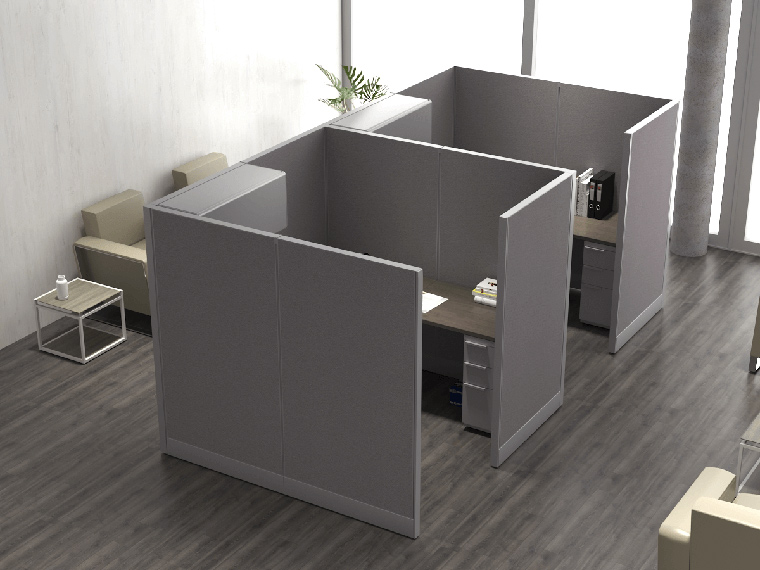
Fabric-covered panels can provide soundproofing and reduce noise levels between workstations, while laminate or metal panels can offer greater durability. Glass panels allow for visibility between workspaces, creating an airy and open atmosphere, while still providing a sense of privacy
The best part about using panels is that they can be easily moved around, stacked, or reconfigured as needed. So, you can always switch up the layout of your workspace furniture if you need more space or privacy. With the right panels, you can create a workspace that meets your needs without compromising on comfort or style.
Personalized Workspaces
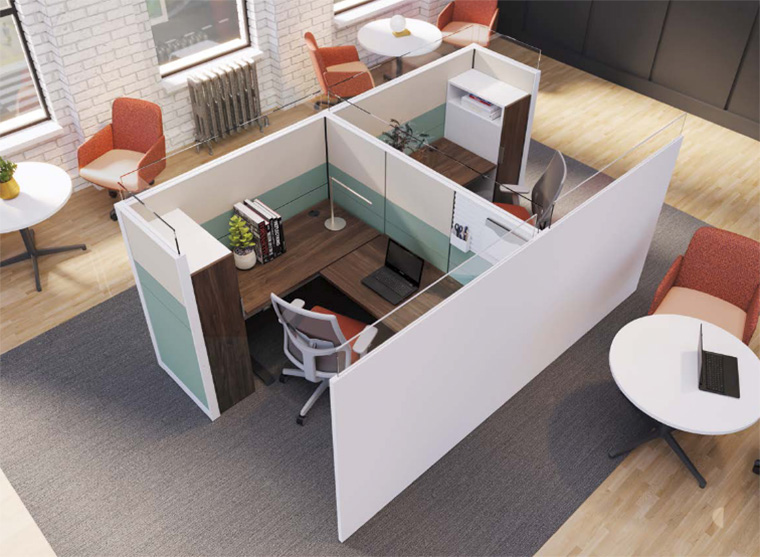
By allowing for more permanent, dedicated workspaces, individuals are better able to focus on their tasks without interruption or distraction. Moving away from hot desking, also known as desk-hopping, is a great way to reduce distractions and allow each individual to have their own workspace. Instead of having multiple people share the same desk or workstation, each employee can have their own dedicated workspace that they can use on a regular basis, whether they’re hybrid workers or are in the office full time. This allows them to keep their belongings and materials organized, so they don’t have to worry about losing things or rearranging items when someone else uses their desk.
Touchdown Spaces
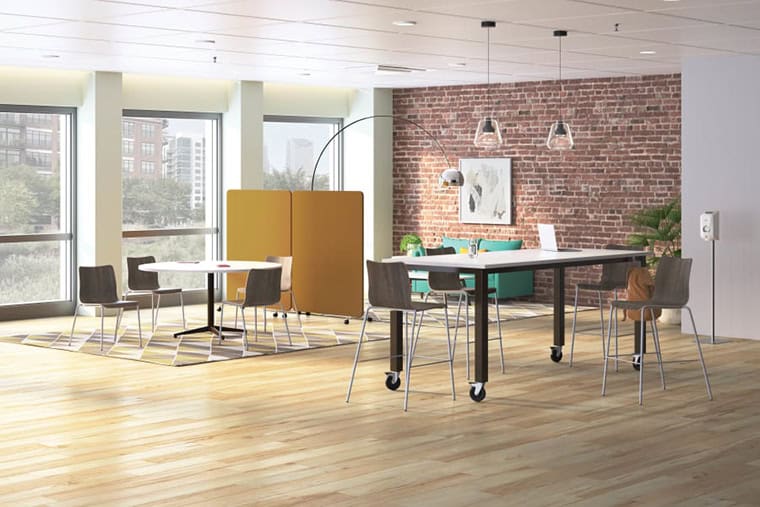
Improved touchdown spaces can also help employees stay productive in the workplace. Rather than having an assigned desk, some companies are now offering touchdown spaces where individuals can drop in, grab a chair, and start working. This type of flexible work area provides a dedicated space where employees can focus on their tasks while still enjoying the flexibility of being able to move around the office, which is especially attractive to hybrid workers.
By creating personalized workspaces and improved touchdown spaces, employers can help their employees maintain personal space and privacy. These workspaces will allow individuals to focus on their tasks without distractions and be more productive.
Sound Proofing the Workplace
To ensure employees feel comfortable and able to focus on their work, sound proofing has become a must-have feature. There are a variety of ways to achieve this, ranging from partitions to personalized workspaces. No matter what type of workspace you choose for your employees, it’s important to take sound proofing into consideration. This will help ensure everyone has the right amount of quiet space, creating a more comfortable and productive work environment.
With the right solutions in place, you can guarantee your staff will be able to work efficiently and effectively every day.
Seven Ways to Soundproof Your Office:
- Sound Absorbent Wall and Desk Paneling
- Dedicated Quiet Spaces
- Private Meeting Areas
- Textured Seating
- Sound Absorbent Ceiling Tiles
- Noise Cancelling Headphones
- Dedicated Printer/Copier Rooms




